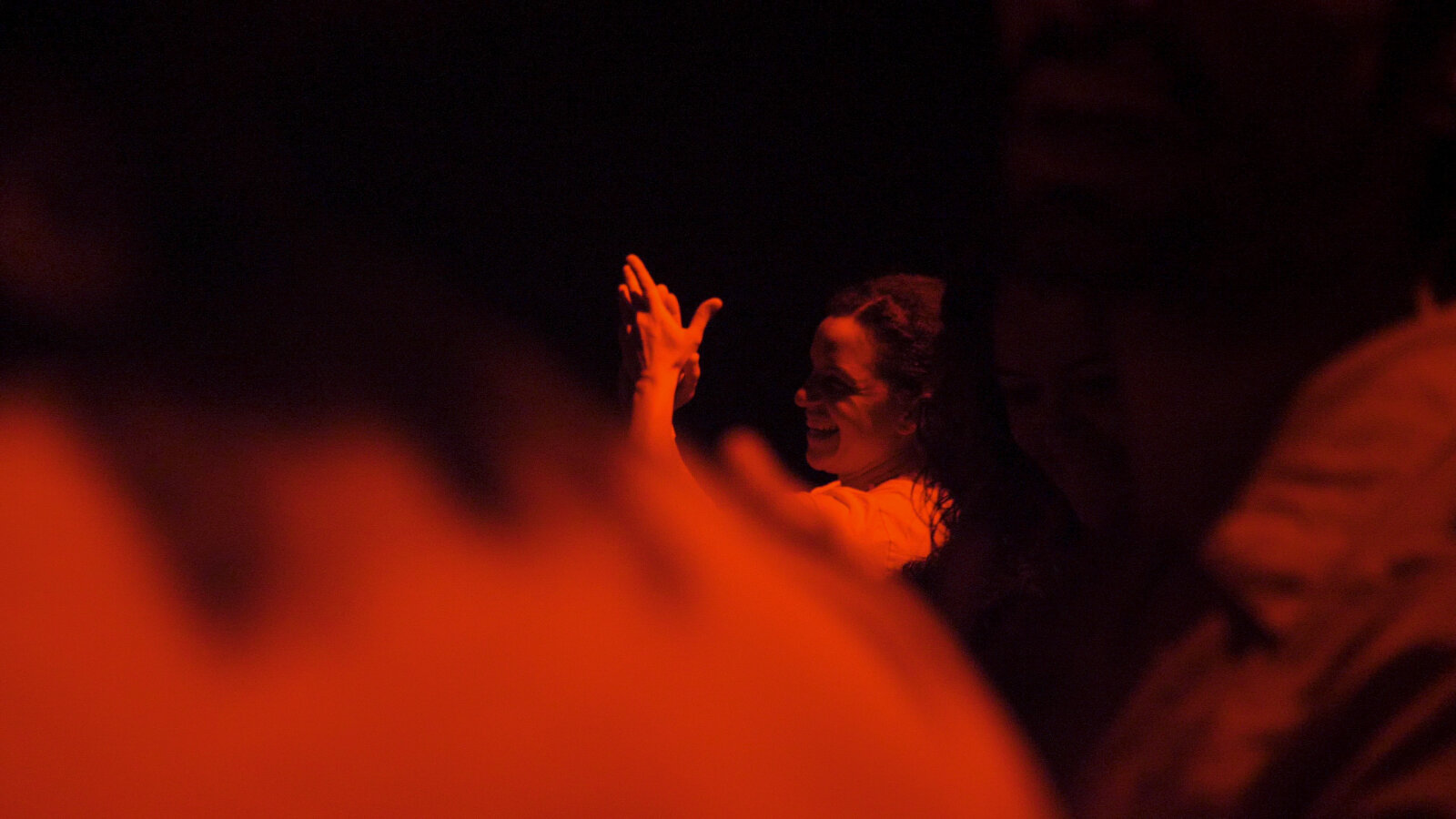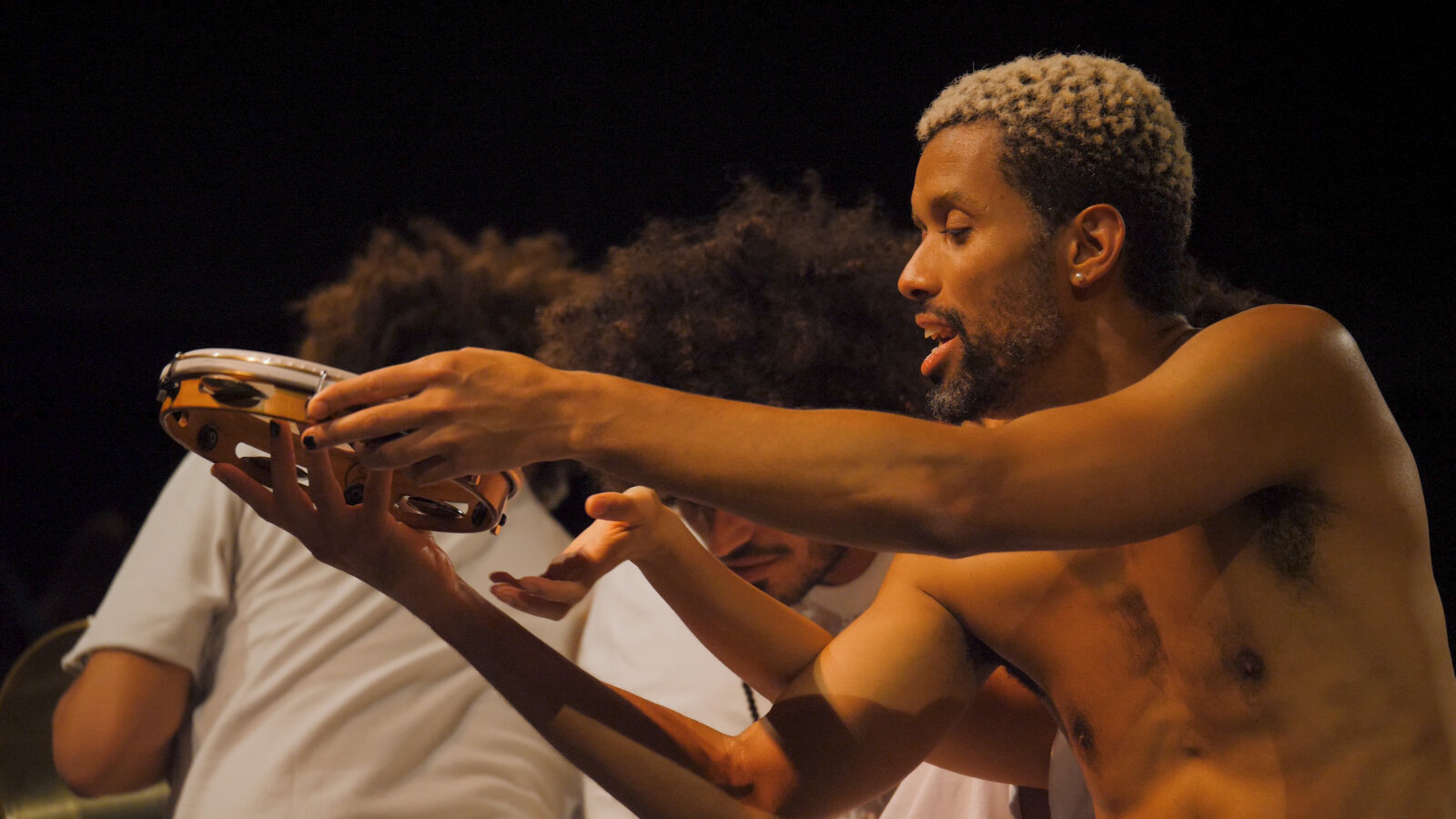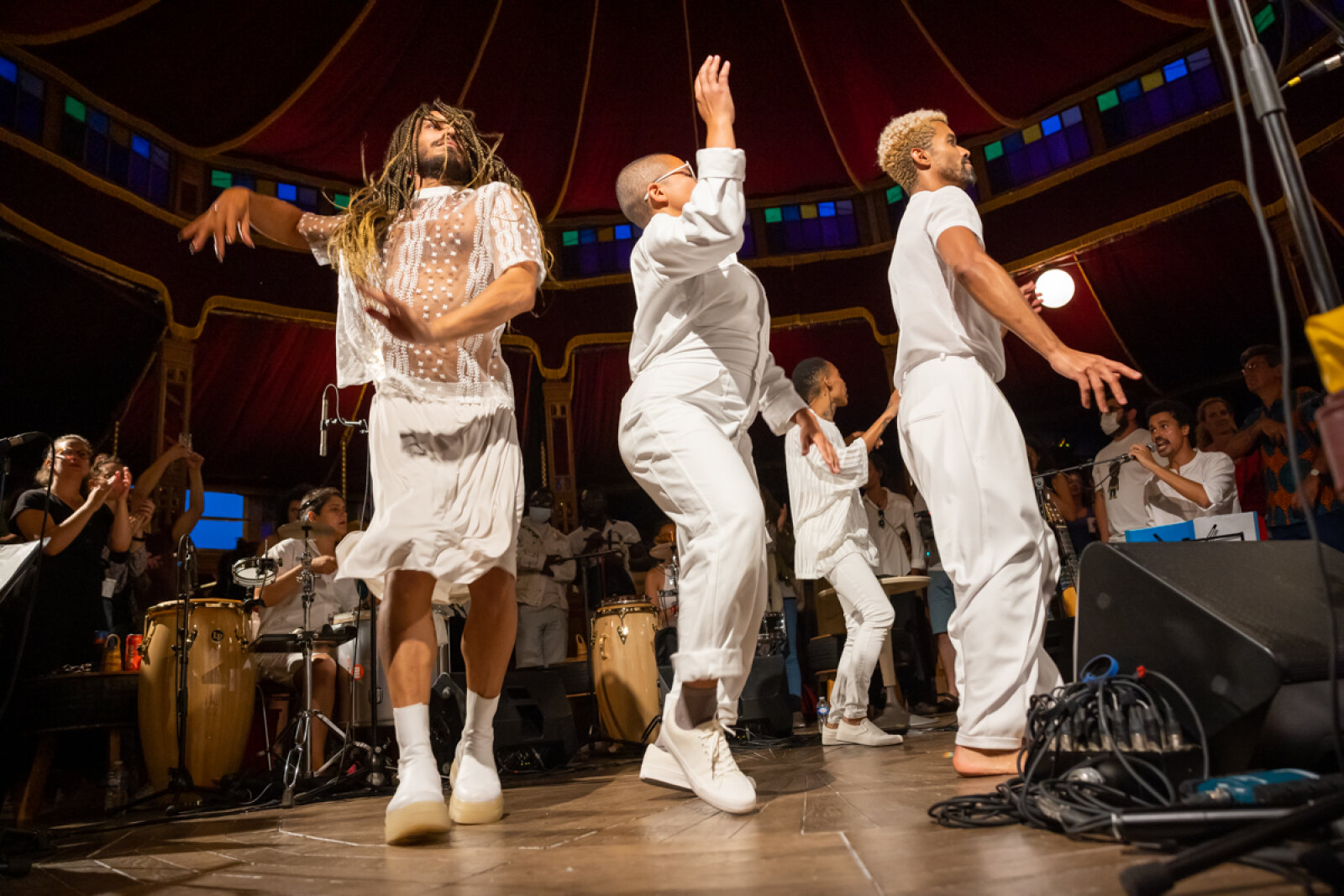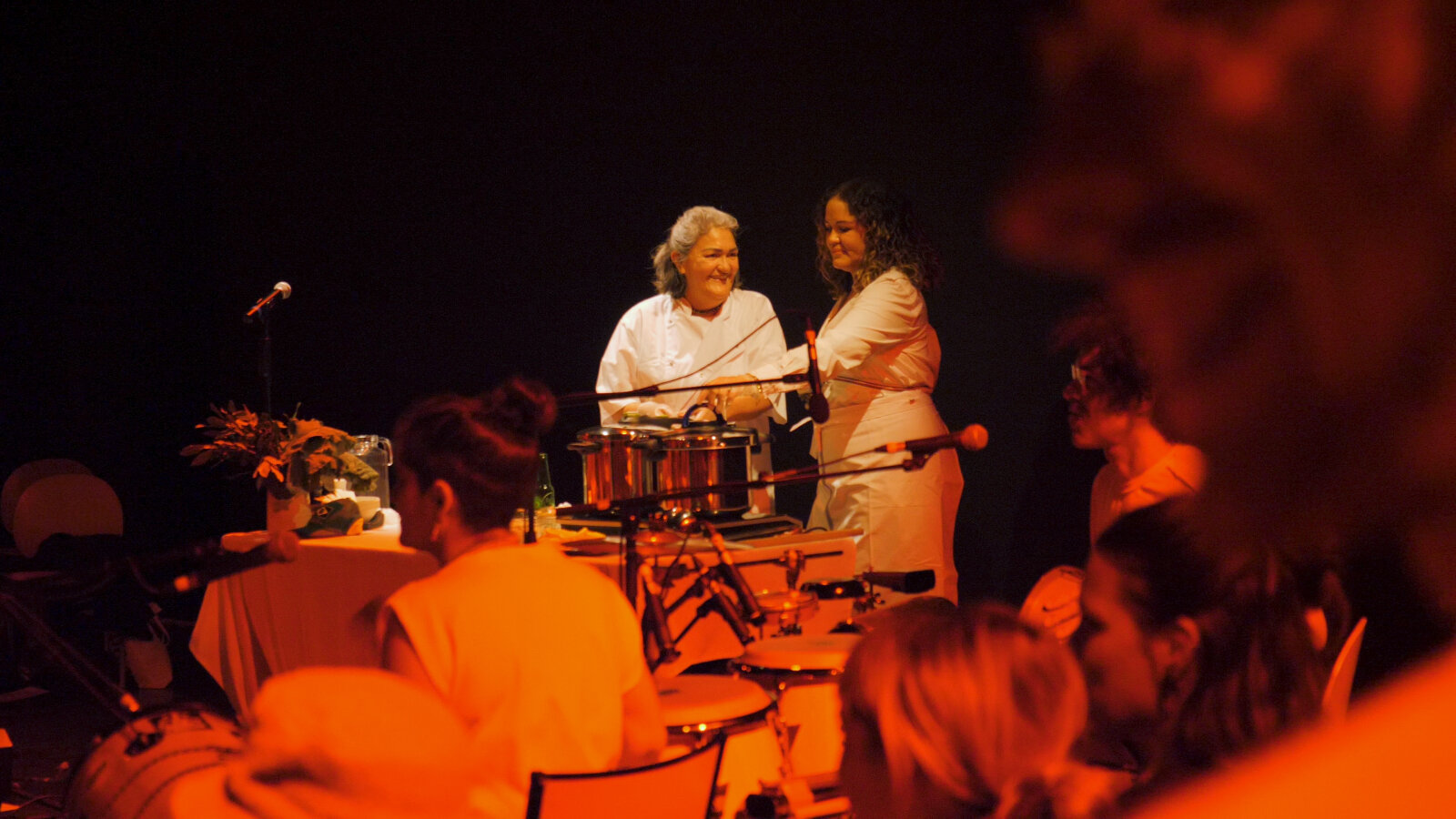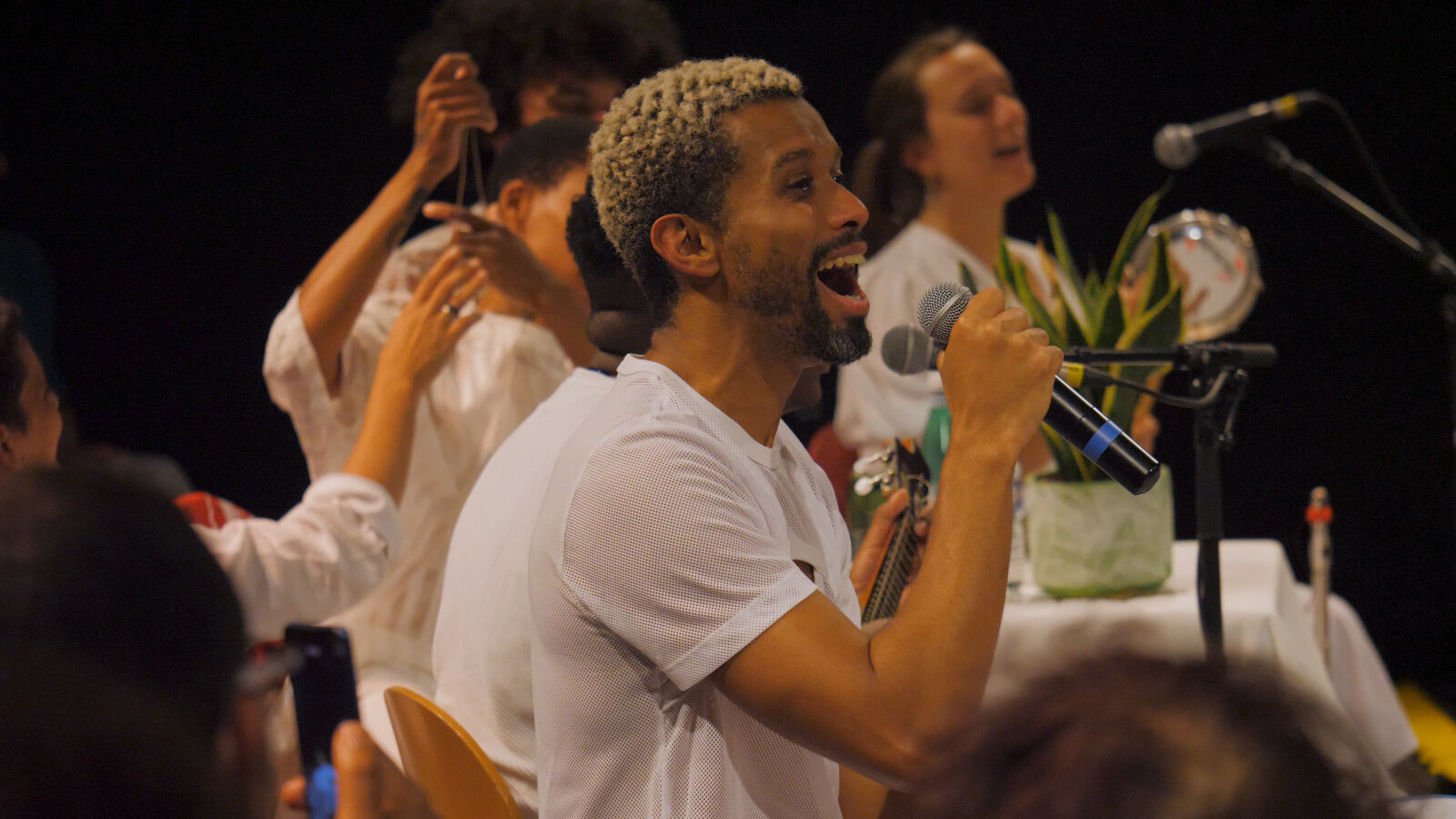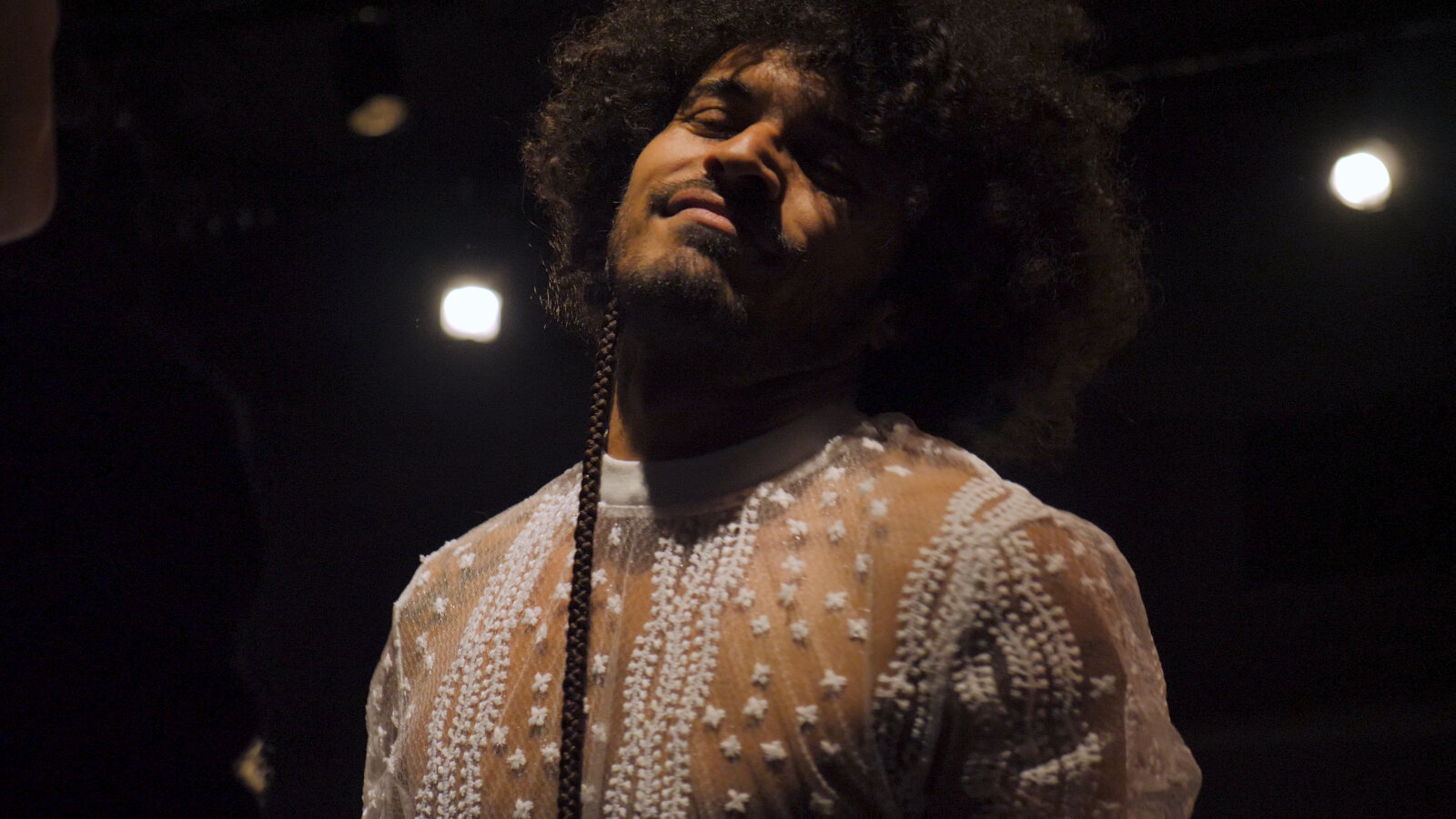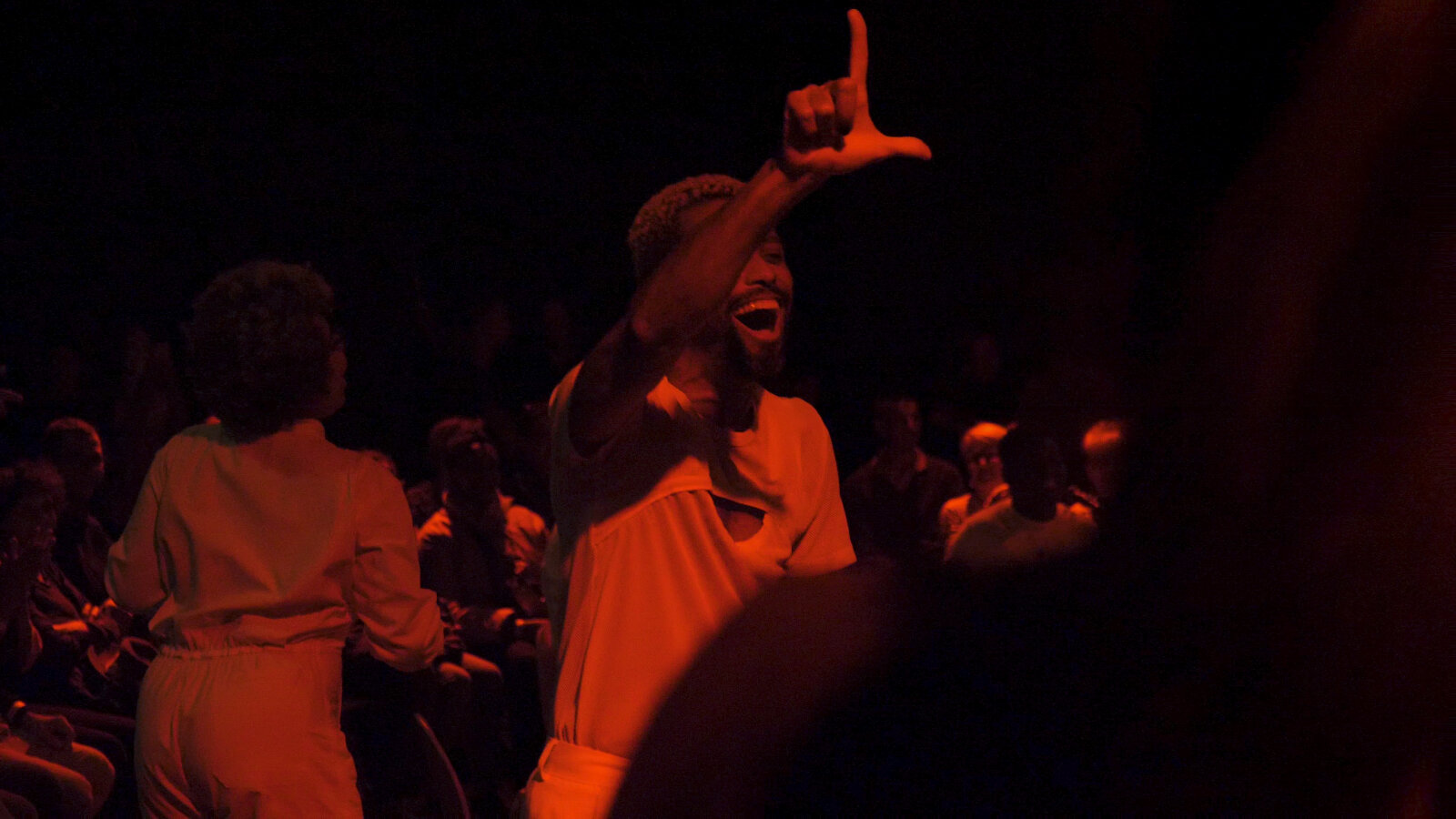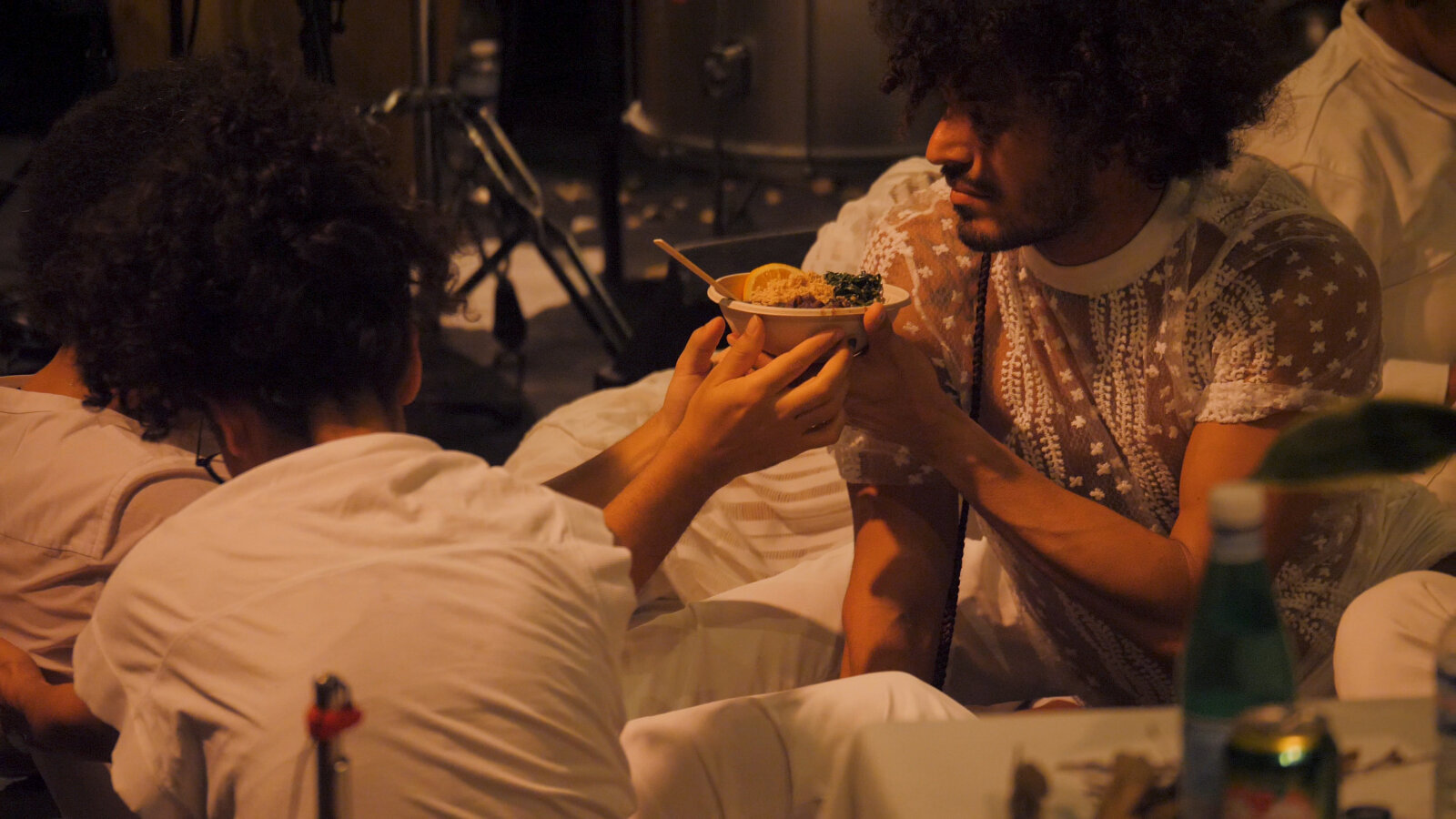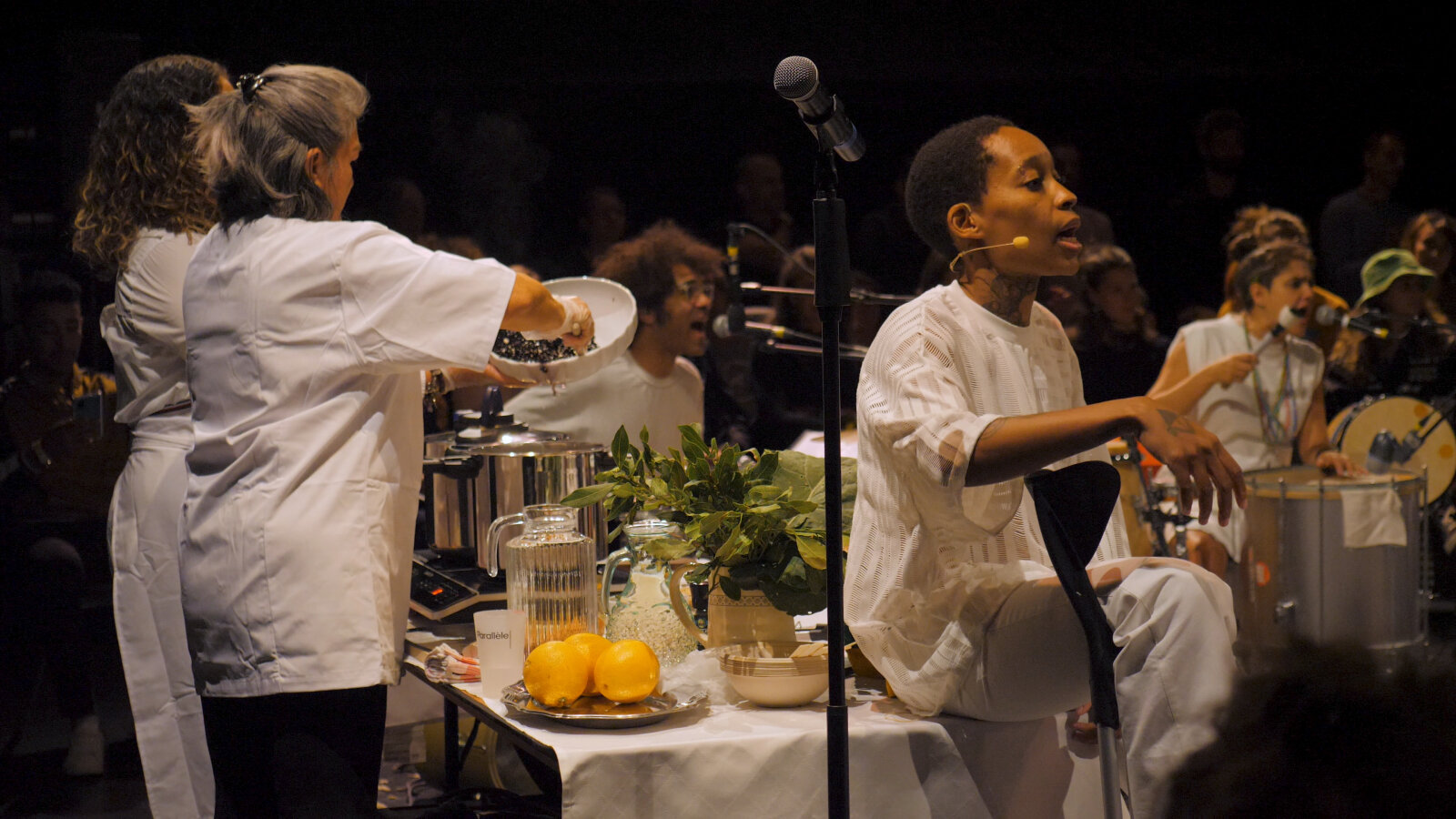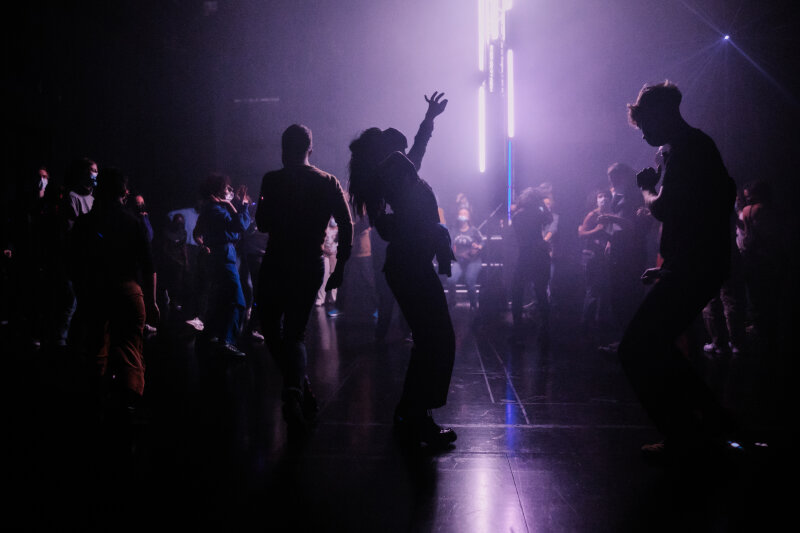In one scene of his iconic solo O Samba do Crioulo Doido (2004), Brazilian choreographer and dancer Luiz de Abreu dances to a song whose lyrics describe the recipe for feijoada, the traditional Brazilian dish, to the rhythm of bossa nova. The stage is empty and dark, except for a shower of light that rests on his body and both limits his space and emphasizes his presence. In this scene we see a black man, his body almost naked, dressed only in a pair of silver waders and large red rubber lips. He dances lightly the samba, his steps are inhabited by other references of the dance: Martha Graham, Swan Lake... He offers himself to the public's gaze as if he were the dish of the day.
This scene suggests to us many reflections related to the history, to the actuality of Brazil and to the body that we see on stage.
In the scene, the song is played to the rhythm of bossa nova. This "purified'' version of the samba is a real Brazilian export product, very well known and famous, but which does not escape the current discussion on cultural appropriation. The song is sung in French, which gives a "chic" aspect to this banal song that is in fact only the recipe of a traditional and popular dish. Singing it in French already places it in a position of "superiority". This feijoada-bossa-nova song is danced by a black man, who knows in his own skin the violence of the colonial gaze on his body, but gracefully embodies the knowledge of the dance that was once criminalized and that today is used as the calling card of the "land of joy".
FEIJOADA is born from the reflection that this scene provokes. On stage, Calixto Neto and his team dives and develops the layers of violence and joy (and not only) present in O Samba. The audience is invited to witness the preparation of a feijoada in real time, with the cooking time being the time of the evening. A roda de samba - a specific type of gathering where the samba is played, the space is occupied by the musicians playing in a circle - sets the pace of the evening. The repertoire is composed of songs that are part of our emotional memory and that weave a dialogue with the stages of preparation of the dish and the interventions of texts and dances of the performers. These three elements will be the axes around which the evening will unfold. The ingredients and the stages of cooking the feijoada dialogue with the speeches and dances, which in turn dialogue and nourish the songs of the roda's repertoire.
Linked to the cooking process and the ingredients, various questions are addressed and interpreted: what are the cheapest meats, the cheapest flesh on the market? Which bodies are most affected by the inequalities generated by Brazil's place in the global order? The cannon fodder of the country since its invasion, the effects of their displacement until today. The transformations of the bodies and the language, the political news of the country which is very much talked about in the western world.
In FEIJOADA, we launch a creative and shared reflection from our national gastronomic symbol, trying to demystify it in the different faces and reflections of a contemporary black Brazil.
FEIJOADA was created in close collaboration with Ana Laura Nascimento and Yure Romão, who is not only the musical director of the project, but also the voice that sings in our evening.
Stay for _Sobremesa_ after the saturdayshow – what's better than dessert? We invite you to the beats of DJane Marara Kelly! Let's dance!
In one scene of his iconic solo O Samba do Crioulo Doido (2004), Brazilian choreographer and dancer Luiz de Abreu dances to a song whose lyrics describe the recipe for feijoada, the traditional Brazilian dish, to the rhythm of bossa nova. The stage is empty and dark, except for a shower of light that rests on his body and both limits his space and emphasizes his presence. In this scene we see a black man, his body almost naked, dressed only in a pair of silver waders and large red rubber lips. He dances lightly the samba, his steps are inhabited by other references of the dance: Martha Graham, Swan Lake... He offers himself to the public's gaze as if he were the dish of the day.
This scene suggests to us many reflections related to the history, to the actuality of Brazil and to the body that we see on stage.
In the scene, the song is played to the rhythm of bossa nova. This "purified'' version of the samba is a real Brazilian export product, very well known and famous, but which does not escape the current discussion on cultural appropriation. The song is sung in French, which gives a "chic" aspect to this banal song that is in fact only the recipe of a traditional and popular dish. Singing it in French already places it in a position of "superiority". This feijoada-bossa-nova song is danced by a black man, who knows in his own skin the violence of the colonial gaze on his body, but gracefully embodies the knowledge of the dance that was once criminalized and that today is used as the calling card of the "land of joy".
FEIJOADA is born from the reflection that this scene provokes. On stage, Calixto Neto and his team dives and develops the layers of violence and joy (and not only) present in O Samba. The audience is invited to witness the preparation of a feijoada in real time, with the cooking time being the time of the evening. A roda de samba - a specific type of gathering where the samba is played, the space is occupied by the musicians playing in a circle - sets the pace of the evening. The repertoire is composed of songs that are part of our emotional memory and that weave a dialogue with the stages of preparation of the dish and the interventions of texts and dances of the performers. These three elements will be the axes around which the evening will unfold. The ingredients and the stages of cooking the feijoada dialogue with the speeches and dances, which in turn dialogue and nourish the songs of the roda's repertoire.
Linked to the cooking process and the ingredients, various questions are addressed and interpreted: what are the cheapest meats, the cheapest flesh on the market? Which bodies are most affected by the inequalities generated by Brazil's place in the global order? The cannon fodder of the country since its invasion, the effects of their displacement until today. The transformations of the bodies and the language, the political news of the country which is very much talked about in the western world.
In FEIJOADA, we launch a creative and shared reflection from our national gastronomic symbol, trying to demystify it in the different faces and reflections of a contemporary black Brazil.
FEIJOADA was created in close collaboration with Ana Laura Nascimento and Yure Romão, who is not only the musical director of the project, but also the voice that sings in our evening.
Stay for _Sobremesa_ after the saturdayshow – what's better than dessert? We invite you to the beats of DJane Marara Kelly! Let's dance!
| Choreography | Calixto Neto |
| Artistic collaboration | Ana Laura Nascimento |
| Performance | Calixto Neto, Ana Laura Nascimento, Yure Romão, Emilia Chamone, James Müller, Julia Donley, Marina Japonega, Kaiodê Encarnação, Silex Silence & Acauã El Bandide |
| Technical Direction | |
| and lights | Beatriz Kaysel |
| Sound | Arnaud Pichon |
| Costumes | Annie Melza Tiburce |
| Production and | |
| distribution | Julie Le Gall |
| Tour management | Coralie Guibert |
| Executive production | |
| during the creation | Festival d'Automne à Paris Executive production |
| Distribution since | |
| January 2022 | VOA – Calixo Neto |
| … |
| Coproduction | Festival d'Automne à Paris, le Centquatre Paris and Passages Transfestival Metz. |
